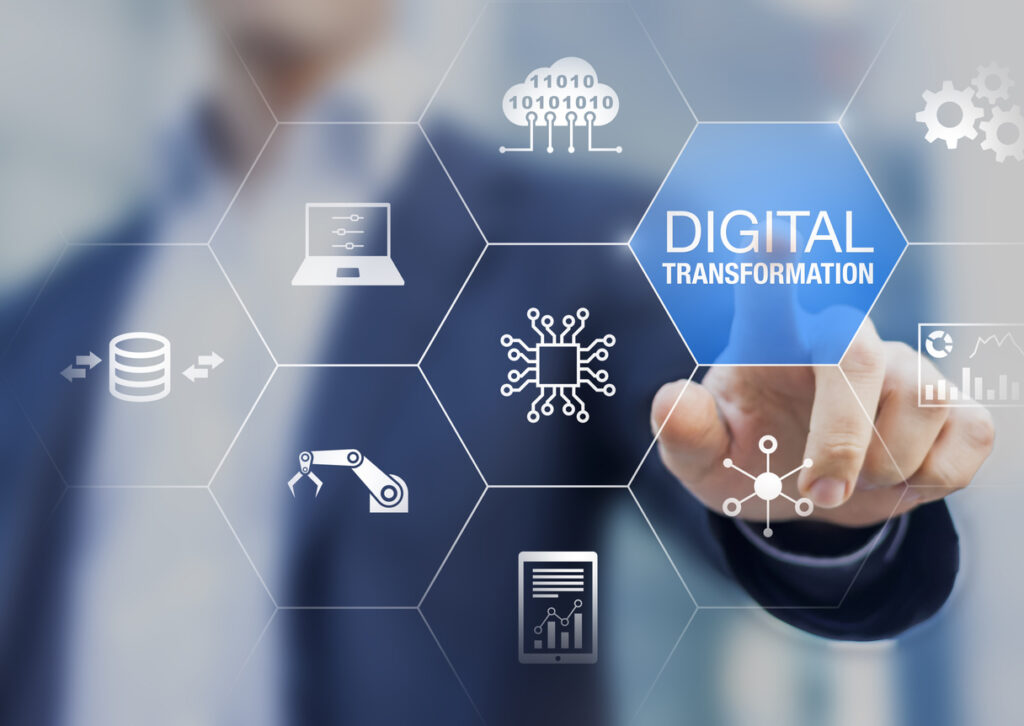How to Capture Institutional Knowledge (and Why It’s Important)

Knowledge is hard to gain, harder to maintain, and even harder to retain. In an era in which your organization’s institutional knowledge is a strategic advantage, holding on to that knowledge is the key to success. Therefore, capturing institutional knowledge is important because it preserves critical expertise, ensures organizational continuity, and enables informed decision-making even as employees leave or retire.
During periods of high employee turnover, retirement, or layoffs, capturing institutional knowledge is critical. When an employee leaves, their accumulated knowledge doesn’t go with them. It remains in the company and helps onboard new specialists.
Learning knowledge-capturing tactics enables you to build a robust knowledge base that supports organization-wide learning, increases customer satisfaction, facilitates new product development, and more. If you still haven’t implemented a knowledge retention strategy for your business, now is a good time to start. Let’s take a closer look at what it takes to capture and retain institutional knowledge within your organization.
What Is Institutional Knowledge?
Institutional knowledge refers to the information, experiences, tactics, practices, and skills that employees, leaders, and stakeholders acquire within an organization. Utilizing institutional knowledge innovates decision-making, onboarding, mentorship, and operational continuity.
An example of institutional knowledge is a sales professional’s in-depth understanding of certain customer segments and their pain points. This insight often stems from years of accumulated experience and interactions across different market conditions. They know exactly how to approach this group or individuals to maximize their lifetime value.
When employees leave the company, they can take a big part of their institutional knowledge with them. To keep this valuable information within the organization, it’s essential to implement effective knowledge retention practices, especially when employee turnover rates are high.
How to Capture Institutional Knowledge

To effectively capture institutional knowledge, teams should follow a systematic approach that utilizes employees, technology, and processes. Following these steps ensures that knowledge is never lost or siloed, but instead easily searchable, accessible, and up-to-date.
1. Identify Critical Roles and Knowledge
Capturing institutional knowledge begins with identifying the individuals and functions that possess the most valuable expertise within your company. These are typically individuals in specialized or long-tenured roles who possess insights that drive operations, innovation, or customer success. Assessing which positions are knowledge-dependent helps determine where tacit and explicit information resides, preventing key learnings from being lost when employees transition or retire.
Once critical roles are identified, conduct interviews and workflow assessments to uncover what knowledge is essential to the organization’s performance. Focus on understanding not only what employees do, but how and why they do it. This helps distinguish surface-level tasks from deeper insights that contribute to problem-solving, process efficiency, and strategic decision-making, which are the foundations for effective knowledge capture.
2. Prioritize Knowledge to Capture
Prioritize and define the institutional knowledge that matters most, ensuring time and resources are devoted to capturing it. Begin by mapping knowledge to business goals and identifying which insights have the greatest impact on productivity, compliance, customer satisfaction, or long-term growth. Knowledge that supports core processes or mitigates high-risk knowledge loss should rank first.
Engaging leaders and subject-matter experts helps validate which areas are of the highest strategic importance. Use criteria such as frequency of use, difficulty of replacement, and potential cost of loss to determine urgency. Prioritizing institutional knowledge this way allows your organization to focus capture efforts where they have the greatest impact on resilience and performance.
3. Utilize Employees to Capture Knowledge
Employees are the most direct and reliable source of institutional knowledge. Encouraging them to document, share, and reflect on their work processes transforms individual experience into collective value. This includes structured approaches like interviews, mentorship programs, or knowledge-mapping exercises that draw out tacit knowledge through conversation and demonstration.
Creating a supportive environment where employees feel their expertise is valued is essential for knowledge capturing. Incentivizing contributions, recognizing shared insights, and integrating knowledge capture into daily routines make employees active participants in preserving institutional knowledge. This people-centered approach keeps captured knowledge authentic, practical, and tied to real-world applications.
4. Leverage Multiple Data Formats
Institutional knowledge exists in many forms, so capturing it effectively requires accommodating multiple data formats to reflect how employees naturally share information. Using diverse formats ensures accessibility with structured and unstructured data while engaging different learning styles across the organization.
For example, video recordings can capture demonstrations and context that written guides cannot, while text documentation preserves structured information for quick reference. Encouraging varied formats broadens participation in knowledge-capture initiatives and ensures that both tacit and explicit knowledge are preserved accurately. This also makes the captured knowledge easier to revisit, repurpose, and distribute.
5. Organize and Centralize Knowledge
Once knowledge is captured, it must be organized into a system that is accessible and searchable. Centralizing it in a knowledge management platform allows teams to find and apply information quickly, reducing duplication of effort. Categorization, metadata tagging, and standardized documentation practices are key to maintaining clarity and consistency.
Effective knowledge organization transforms passive information into an active resource. When knowledge is structured logically and linked across functions, it supports faster decision-making and on-demand learning. A centralized repository also streamlines onboarding, cross-department collaboration, and innovation by placing critical insights where everyone can easily access them.
6. Review and Update Knowledge
Knowledge is not static—it evolves alongside business practices, technology, and market conditions. Regularly reviewing and updating captured information ensures it remains relevant and accurate. Establishing update schedules and assigning ownership for content maintenance helps prevent knowledge decay and the spread of misinformation.
Implement version control, peer review, or approval workflows to maintain quality and authority within the knowledge base. This process reinforces trust among employees and ensures the organization benefits from the most current insights. Consistent reviews also transform knowledge bases from a one-time project into a living, sustainable asset.
7. Promote Knowledge Sharing in the Workplace
Sustained knowledge capture depends on fostering a culture that values open communication and knowledge exchange. When sharing insights becomes a norm, employees naturally contribute and draw from institutional knowledge. To achieve this, leadership must play a key role in knowledge sharing by modeling transparency and rewarding collaboration.
Provide tools and opportunities, such as discussion forums, lunch-and-learn sessions, or collaborative platforms, that facilitate easy and meaningful sharing. Encouraging continuous knowledge contribution helps prevent information silos and ensures that valuable expertise circulates throughout the organization. A shared knowledge culture strengthens organizational learning and drives collective intelligence.
The Importance of Institutional Knowledge
Institutional knowledge is vital for organizations, acting as their collective memory that enables informed decision-making, boosts productivity, streamlines onboarding, and enhances customer satisfaction. This knowledge is also important and beneficial for employees. About 98.5% of employees say better knowledge sharing across departments would boost their productivity, and 46% believe improved access to information would make their days more efficient.
Understanding the internal and external significance of institutional knowledge will help companies adapt and grow with their knowledge base:
Internal Significance
Institutional knowledge enables employees to share key information and experience with everyone in their organization, including new hires, for many years. Easy access to this information helps leaders and team members make complex decisions and handle difficult situations.
New employees can utilize institutional knowledge to gain a deeper understanding of the company’s history, values, products, processes, and culture. This can help them become fully productive in their roles faster and reduce the number of times they have to track down a specific subject matter expert to find answers to their questions.
External Significance
Institutional knowledge helps employees improve their decision-making while also elevating the customer experience. This knowledge also allows you to create a substantial knowledge base that can serve as a source of data for your customers. In fact, simplifying processes through knowledge bases improves customer effort scores by 32% and boosts customer retention by 18%, resulting in a 22% growth in repeat customer revenue.
Meanwhile, customers can benefit from working with a knowledgeable representative who knows exactly how to address their pain points. This reduces resolution time and increases the accuracy of solutions provided, resulting in measurable improvements in customer satisfaction metrics. Additionally, consistent delivery of expert assistance supports data-driven decision-making and resource allocation, further optimizing service processes.
Types of Institutional Knowledge
There are three types of knowledge that can be captured within your organization, and it’s essential to understand the differences between them. While all knowledge is necessary, breaking it down into types can help you design efficient capturing tactics.
- Explicit knowledge: This type of knowledge is the easiest to capture and preserve since it’s already recorded. Documents, records, training materials, publications, and reports are examples of explicit knowledge. You can view, store, and transfer it according to your knowledge base management tactics without person-to-person interactions.
- Implicit knowledge: This type of knowledge is more challenging to capture and preserve, as it’s often personal, such as best practices and individual skills. For the organization to retain this knowledge, team members have to share it through training and interpersonal interactions.
- Tacit knowledge: This type of knowledge is the most difficult to capture because feelings, experience, and intuition can be challenging to convert into shareable knowledge. An example of tacit knowledge is knowing exactly what to say to a particular customer to close a sale. This knowledge stems from personal experience with this customer and understanding how they react to specific calls to action.
While some knowledge types are tougher to retain than others, it’s possible to make them accessible even when people who carry the information leave the organization. The key is capturing and preserving information the moment it appears.
5 Ways to Maximize Your Institutional Knowledge

You probably already have an impressive collection of institutional knowledge. However, there is never too much of it. The more you can capture, organize, and retain, the easier it will be to leverage its major benefits. Here’s how.
1. Rely On Your Subject Matter Experts to Document Knowledge
Knowledge documentation should be a continuous process led by subject matter experts (SMEs) who hold the most valuable insights. To capture their expertise efficiently, encourage them to participate in recorded interviews, workshops, and training sessions that can be added to your knowledge base. Provide practical tools such as templates and recording platforms to simplify the process and reduce administrative work. Leadership should ensure documentation is fast and rewarding so SMEs can contribute effectively without sacrificing time on high-impact tasks
2. Make It Easy for Employees to Access Knowledge In Real-Time
Ensuring that employees can easily retrieve knowledge when they need it most drives true productivity and innovation, empowering teams to make informed decisions without delays. To achieve this, organizations should build an intuitive and well-organized knowledge base that integrates seamlessly with daily workflows. Leveraging tools such as collaborative platforms, AI-driven enterprise search, and customized permission settings ensures that relevant information is available instantly to the right people.
3. Streamline Documentation Processes
Timely documentation is the pillar of capturing institutional knowledge. Companies may need to rely on practical documentation tools that not only simplify the process but also automate a significant part of it. To ensure successful preservation, you need to design a documentation process that is:
- Transparent
- Consistent
- Easy to understand
- Available to all authorized employees
Ideally, the information the subject matter expert shares should be consistently recorded and made available to the rest of the organization. For example, you could develop a process for SMEs to share their learnings through short videos. By uploading your videos to a knowledge base that automatically transcribes spoken words, you would make this content easily searchable for the rest of the organization.
4. Make it Easy for Employees to Share Their Knowledge
A knowledge-driven culture thrives when employees feel empowered and motivated to share what they know. In fact, 80% of employees report their ability to make high-quality decisions quickly has improved due to better access to information from knowledge sharing. To foster this, organizations should implement user-friendly knowledge management tools that can streamline contributions, making the knowledge-sharing process intuitive and rewarding. When they understand that sharing knowledge strengthens teamwork and drives innovation, engagement rises, productivity improves, and retention naturally follows.
5. Turn Knowledge Capturing into a Regular Part of the Job
Capturing institutional knowledge should be a core responsibility, not an afterthought. Organizations must integrate knowledge sharing into daily workflows, provide regular opportunities for collaboration, and clearly communicate its importance. Encouraging social interactions through webinars, training sessions, and team discussions helps transform tacit knowledge into shared organizational insight.
Examples Where Institutional Knowledge Can Be Used
Knowing how to capture this knowledge and where to use it can directly affect your company’s bottom line. It can help teams replicate proven strategies, avoid repeating past mistakes, and maintain consistency in quality and performance across the organization. Here are some examples of where institutional knowledge can be leveraged:
1. Documentation and Tutorials for Better Onboarding
Poor onboarding is one of the key factors contributing to high turnover rates. Ineffective onboarding leads to prolonged lower productivity and higher operational costs. Plus, employee turnover is costly because valuable tacit knowledge leaves with departing employees, and poor onboarding negatively impacts retention and engagement.
By capturing institutional knowledge and transforming it into comprehensive onboarding materials, you enhance the onboarding process and boost employee satisfaction.
2. A Company-Wide Knowledge Base
A knowledge base is a centralized digital library that captures and organizes institutional knowledge. It provides a single, searchable source of truth that enables employees, customers, and other authorized users to easily access accurate, high-quality information. As your knowledge base expands, it enhances organizational efficiency by strengthening customer communication, preserving critical knowledge, and improving cross-department collaboration, ultimately driving continuous growth across your organization.
3. Succession Plan During Offboarding
Effective succession planning is essential to manage employee turnover smoothly. By capturing institutional knowledge early, you can develop a comprehensive succession plan that avoids the chaos of scrambling for critical information as employees transition out of their roles. Successfully preserving all three types of knowledge streamlines the offboarding process, reduces employee frustration, and ensures organizational continuity.
4. Cross-Training Programs
Cross-training programs play a vital role in enhancing employee skills, fostering empathy, improving cross-department communication, and encouraging employees to step outside their comfort zones. To maximize their impact, organizations can leverage captured institutional knowledge to provide structured, effective training. A well-executed cross-training program generates valuable knowledge and insights that should be captured and integrated back into the knowledge base for ongoing use, creating a continuous cycle of learning and organizational improvement.
Frequently Asked Questions
How can small or mid-sized businesses start capturing institutional knowledge without large budgets?
Small and mid-sized businesses can systematically document essential processes and insights using affordable or free tools like shared documents, wikis, or simple knowledge management platforms. They can also leverage peer-to-peer learning and internal mentorship to facilitate knowledge transfer organically without large investments. Encouraging a culture of knowledge sharing early on helps preserve critical information at a lower cost.
How can companies ensure that employees consistently contribute to the knowledge base?
Companies can foster a culture of knowledge sharing from day one by integrating knowledge contribution into onboarding and incentivizing active participation through recognition and rewards. Leadership should lead by example and actively encourage employees to document and share insights, reinforcing the behavior. Providing user-friendly platforms and regular reminders also helps maintain consistent contributions.
How should an organization prioritize which type of knowledge (implicit, explicit, tacit) to capture first?
Organizations usually start with capturing explicit knowledge, as it is documented and easier to collect. Next, they focus on implicit knowledge with mentoring and webinars. Tacit knowledge, being experiential and more challenging to express, is captured last through mentoring, storytelling, and the creation of collaborative environments that support knowledge exchange.
What’s the difference between capturing institutional knowledge and building Enterprise Intelligence?
Capturing institutional knowledge involves collecting, organizing, and preserving an organization’s collective information and experiences primarily as a knowledge repository. Enterprise Intelligence, on the other hand, is a broader strategic framework that integrates knowledge management with business intelligence and enterprise search to provide real-time insights and actively drive measurable business outcomes. It transforms static knowledge into dynamic, actionable intelligence that enhances decision-making at scale.
What does knowledge capture look like during offboarding, turnover, or retirement transitions?
During offboarding, knowledge capture involves structured processes such as exit interviews, documented handovers, and succession planning to transfer critical information before the employee departs. Creating checklists and encouraging departing employees to record their tacit knowledge via mentoring or recordings can mitigate knowledge loss. Positive offboarding not only preserves knowledge but also supports organizational learning and future hiring success.
Growth and Development Start with Capturing Institutional Knowledge
Capturing institutional knowledge is essential to your organization’s journey toward becoming (or maintaining its status as) an industry leader. With the right techniques and tools, you can turn expert knowledge and experience into an accessible database that caters to many business needs.
Once you implement knowledge sharing, capturing, and retention into the company culture, you can start reaping the benefits almost immediately.
Capture Institutional Knowledge!
Learn how Bloomfire can help capture institutional knowledge for valuable insights
Learn More
This post was originally posted in February 2023. It was updated with fresh content in November 2025.

Digitalization and Digitization of Business Processes (+How They Drive Digital Transformation)

What Is Business Digitization? A Comprehensive Guide to Modernizing Your Operations

How Proactive Business Leaders Are Preserving Their People’s Knowledge

Start working smarter with Bloomfire
See how Bloomfire helps companies find information, create insights, and maximize value of their most important knowledge.

Take a self guided Tour
See Bloomfire in action across several potential configurations. Imagine the potential of your team when they stop searching and start finding critical knowledge.